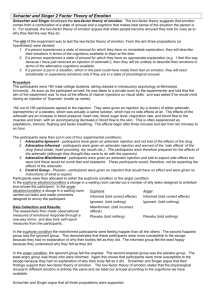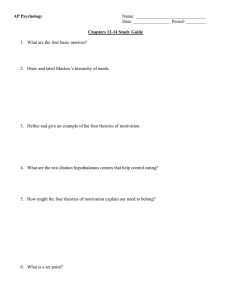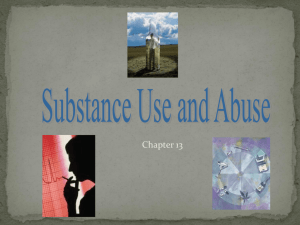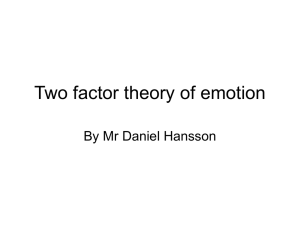The Two Factor Theory
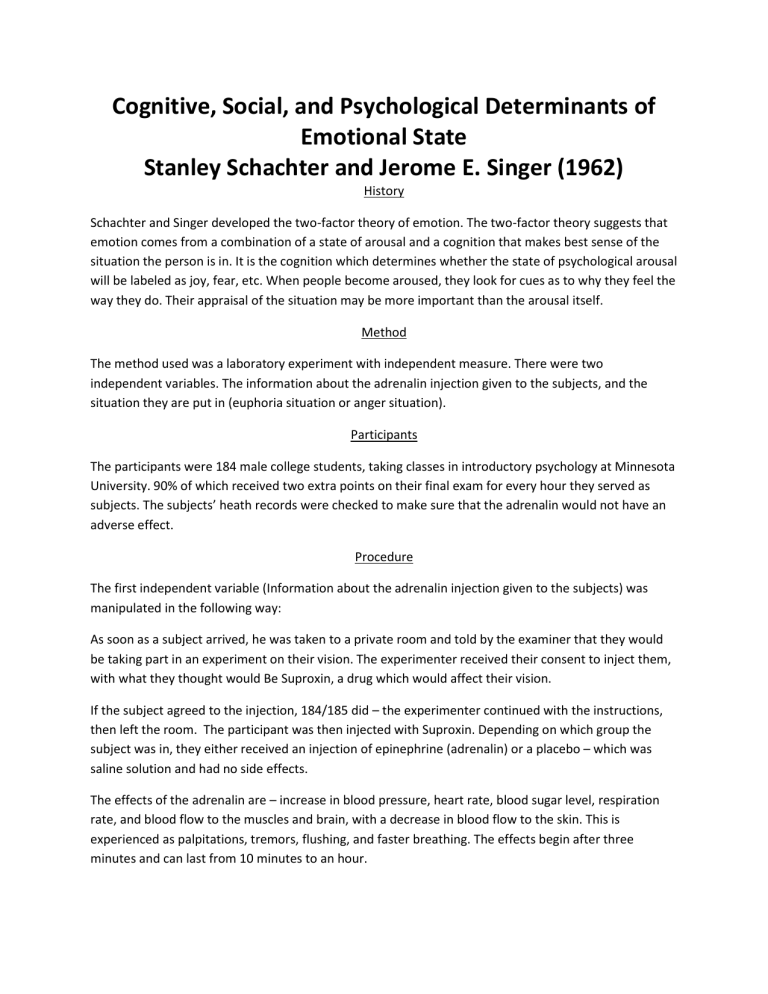
Cognitive, Social, and Psychological Determinants of
Emotional State
Stanley Schachter and Jerome E. Singer (1962)
History
Schachter and Singer developed the two-factor theory of emotion. The two-factor theory suggests that emotion comes from a combination of a state of arousal and a cognition that makes best sense of the situation the person is in. It is the cognition which determines whether the state of psychological arousal will be labeled as joy, fear, etc. When people become aroused, they look for cues as to why they feel the way they do. Their appraisal of the situation may be more important than the arousal itself.
Method
The method used was a laboratory experiment with independent measure. There were two independent variables. The information about the adrenalin injection given to the subjects, and the situation they are put in (euphoria situation or anger situation).
Participants
The participants were 184 male college students, taking classes in introductory psychology at Minnesota
University. 90% of which received two extra points on their final exam for every hour they served as subjects. The subjects’ heath records were checked to make sure that the adrenalin would not have an adverse effect.
Procedure
The first independent variable (Information about the adrenalin injection given to the subjects) was manipulated in the following way:
As soon as a subject arrived, he was taken to a private room and told by the examiner that they would be taking part in an experiment on their vision. The experimenter received their consent to inject them, with what they thought would Be Suproxin, a drug which would affect their vision.
If the subject agreed to the injection, 184/185 did – the experimenter continued with the instructions, then left the room. The participant was then injected with Suproxin. Depending on which group the subject was in, they either received an injection of epinephrine (adrenalin) or a placebo – which was saline solution and had no side effects.
The effects of the adrenalin are – increase in blood pressure, heart rate, blood sugar level, respiration rate, and blood flow to the muscles and brain, with a decrease in blood flow to the skin. This is experienced as palpitations, tremors, flushing, and faster breathing. The effects begin after three minutes and can last from 10 minutes to an hour.
The subjects were placed into one of four experimental conditions:
1.
Adrenaline Ignorant – the subjects were given an adrenalin injection and not told of the side effects of the drug
2.
Adrenalin Informed – subjects were given an adrenalin injection and were warned of the side effects of the drug (hands may shake, heart may pound, dry mouth, nervousness, etc). The subjects were therefore prepared for the effects of the adrenalin (although they thought they were results of the Suproxin.)
3.
Adrenalin Misinformed – subjects were given an adrenalin injection and told to expect side effects but were told these would be numb feet and a headache. These subjects would therefore, not be expecting the effects of adrenalin.
4.
Control – placebo 0 subjects were given an injection with no side effects and were not told what to expect.
The experimenters hypothesized that given a state of physiological arousal for which the individual had no adequate explanation (the ignorant and misinformed groups) cognitive appraisal can lead to the individual to describe his feelings with a diverse amount of emotional labels. They will be based on the appraisal of the surroundings. In order to test this hypothesis, the emotional states of the participants were manipulated – either euphoria or anger. The second independent variable was the situation the participants were placed into to – euphoria or anger situation.
Immediately after the subject’s injection, the doctor left the room, and stooges (actors) walked in. The stooge was introduced to the subject and both were told to wait 20 minutes for the Suproxin to be absorbed into their bloodstreams. The participant was at this point placed in either euphoria situation or anger situation.
The Euphoria Situation
The room was in a state of disarray and the examiner said, “The only other thing I should do is apologize for the condition of the room. I didn’t have time to clean it up. So, if you need any scratch paper or rubber bands or pencils, help yourself. I’ll be back in 20 minutes to do your vision test.”
As soon as the experimenter left the room the stooge introduced himself again and made friendly conversation. He then began playing with the rubber bands, paper, pencil, folders, hula hoops, etc. in the room. The stooge encouraged the participant to join them. The routine was meant to make the subject feel happy. The activities included:
Doodling a fish on paper
Crumpling paper up and playing basketball with it
Tossing a paper ball back and forth
Making paper airplanes
Shooting paper pellets with rubber bands
Building a tower out of folders and shooting it with the pellets
Playing with a hula hoop
Acting excited at each of these activities
Anger situation
Immediately after the injection, the experimenter brought a stooge into the subject’s room, and the two introduced themselves. The experimenter said they would need to wait 20 minutes for the Suproxin to get into their bloodstream and affect their vision. He continued, “we would like you to use these 20 minutes to answer a questionnaire.” Then he handed out the questionnaire and said he would be back in 20 minutes. Upon receiving the questionnaire the stooge said, “I really wanted to come in for the experiment today, but I think it’s unfair for them to give you shots. At least you should have told us about the shots before hand. Once you’re here, it is hard to refuse.” Then the doctor left.
The five-page questionnaire started innocently, then grew increasingly personal and insulting (IE: How many times a week do you have sex; with how many men, other than your father, has your mother had sex with?) The stooge became increasingly upset about the questions. For example, he states “I’ll be damned if I fill out number 25, the question asks if I bath regularly! That’s an insult.”
Results
After the two situations were completed, the experimenter came back into the room and said. “We need one more piece of information before we can continue. There are many side-effects of Suproxin, and we need to know what you are feeling. How hungry are you, how tired are you, and what mood are you in – happy or irritated?
The participants who had been informed about the correct effects of the adrenalin did not report any mood change. They simply reported feeling jittery, and explained that this was due to the injection.
Those in the placebo group also did not report having any strange reaction to the injection. It did not matter which group they were in. They did not have any physiological arousal, and therefore did not react in either situation. They had no arousal which they needed to explain.
The participants in the misinformed or ignorant euphoria group reported that the Suproxin made them feel very happy. They believed that the euphoria they felt was a direct result of their injection.
The participants in the misinformed or ignorant anger group reported that the Suproxin made them feel very angry. They believed the anger they felt was a direct result of their injection.
Both groups had the same physiological arousal from the adrenaline – however they interpreted hose feelings differently and therefore experienced different emotions. The formation of emotions is based on two factors – physiological arousal and appraisal of situation.
Explanation
Schachter and Singer argue that their findings support their two-factor theory of emotion. The theory states that the physiological arousal in different emotion is entirely the same and we label our arousal according to the cognitions we have available.
